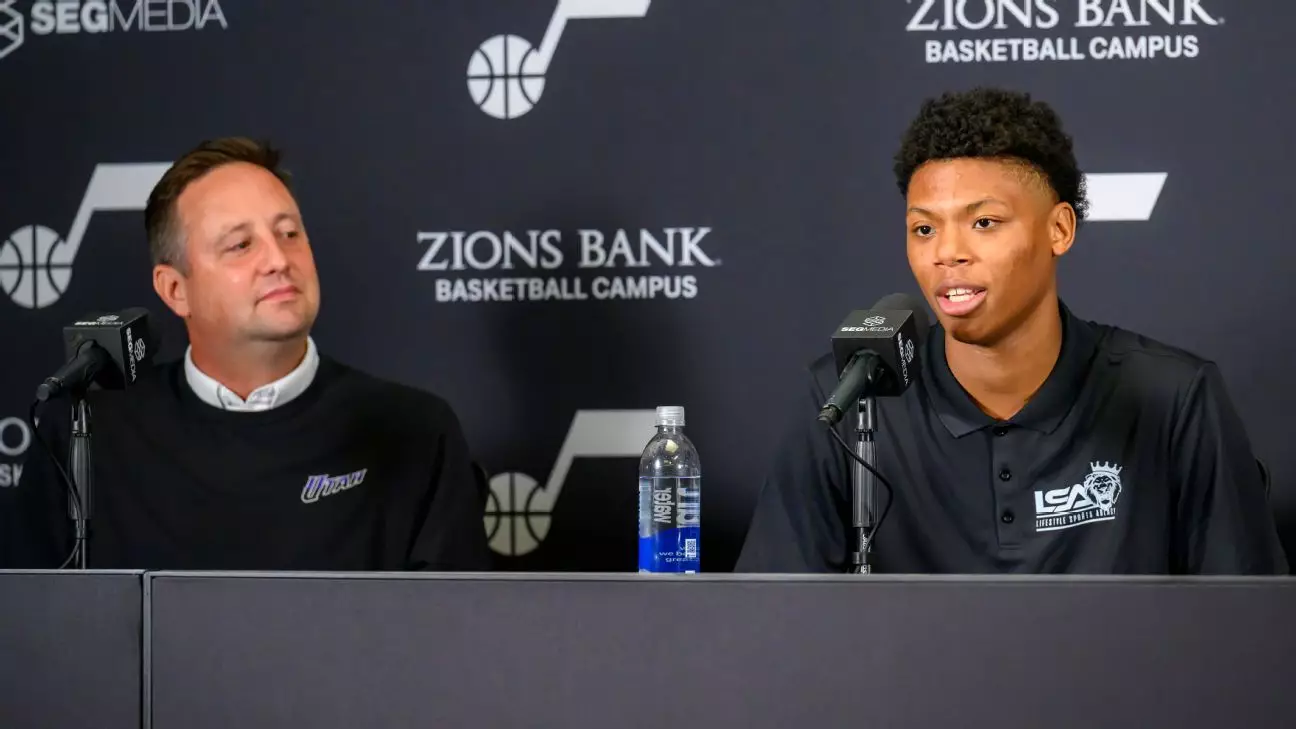Draft day often feels like a calculated dance where teams and players try to find mutual alignment, but the Utah Jazz’s selection of Ace Bailey at No. 5 defied conventional expectations. Despite Bailey’s clear reluctance to engage widely with teams before the draft—bypassing workouts with the Philadelphia 76ers, Charlotte Hornets, and the Jazz themselves—Utah gambled on an 18-year-old talent who didn’t list them as a preferred destination. This move wasn’t just a matter of ignoring red flags; it illustrated the Jazz’s willingness to look beyond immediate optics and invest in raw potential. In today’s NBA, where players have growing agency and draft rights often tilt in favor of teams honoring preferences, Utah’s approach was refreshingly unapologetic, if not bold to a fault.
A Player’s Composure Amid Doubt
In an era where young prospects often wield strategic leverage, sometimes opting for holdouts or trade demands to steer their careers, Bailey’s calm acceptance of his destiny with the Jazz stands out. His reactions — marked by gratitude and focus rather than frustration — reflect a maturity often missing in modern draft narratives. Bailey’s statement about feeling “blessed” to be with Utah feels genuine and somewhat countercultural given the environment. Many would have seen a slide from a top-three mock to fifth overall as a blow, especially after publicly distancing from certain teams. Yet Bailey exhibited a quiet resilience, a resolve to “trust my work” and embrace imperfections. This grounding mindset is promising in navigating the inevitable turbulence of rookie NBA life.
Mixed Signals from Pre-Draft Behavior
Bailey’s selective pre-draft approach raised eyebrows and sparked criticism. On one hand, restricting workouts with interested franchises can be a strategic attempt to manage narrative and expectations. On the other, it risked alienating some teams and contributed to his unexpected drop in the draft order. His case underscores a growing tension within the draft process—where players increasingly leverage their value amidst heightened media scrutiny and personal brand considerations. Yet, Bailey’s cautious engagement with teams didn’t entirely betray overconfidence; perhaps it was a calculated, if risky, display of self-worth. The question remains whether this approach will hinder his integration or if his performance will quickly dissolve such doubts.
Potential vs. Proven Consistency
From a basketball perspective, Ace Bailey presents a tantalizing blend of size, skill, and versatility. At Rutgers, his offensive arsenal was already diverse—he could shoot from distance, handle the ball, and finish at the rim. The Jazz clearly value such a multidimensional forward in an era where adaptability is a premium currency. However, lingering concerns about Bailey’s efficiency and defensive consistency deserve scrutiny. His 34.6% three-point clip, while respectable for a freshman, is not elite, and questions around ballhandling and passing hint at a transitional period ahead. Yet the Jazz’s president of basketball operations, Austin Ainge, emphasized these rookies’ two-way potential, suggesting Utah is prioritizing long-term growth over immediate returns. Whether Bailey can refine his weaknesses fast enough to justify such faith will be one of the team’s defining challenges.
Balancing Character and Ambition: Jazz’s Recruitment Philosophy
The quote from Ainge about targeting players with “high potential and high character” reveals an organizational ethos worth noting. In the age of star-driven franchises, the Jazz appear to lean into culture-building as much as talent acquisition. Signing three rookies with ostensibly strong work ethics signals an investment not only in skill development but also in team chemistry. This is particularly important given the uncertainties surrounding Bailey’s pre-draft attitude. Utah’s leadership seems to believe that such an environment can nurture Bailey’s promising, but imperfect, game into a holistic NBA-ready skill set. It illustrates a moderate, perhaps more grounded, approach aligning closely with center-wing liberal values—balancing individual ambition with collective responsibility.
The Larger Narrative: Dodge the Hype, Embrace the Grind
Ace Bailey’s journey embodies a subtle rejection of both inflated draft hype and entitlement. Instead, it points toward a narrative where talent, resilience, and humility forge the path to success. His acceptance of being drafted by a less favored team and commitment to improving rather than demanding trade leverage challenges many of the transactional dynamics increasingly prevalent in professional sports. The Jazz’s gambit to draft a player with a complicated pre-draft story and mixed reviews is a reminder that potential can sometimes outweigh immediate satisfaction or consensus rankings. Whether it pays off remains to be seen, but the spirit behind this move heralds a refreshing if somewhat risky commitment to development and character—a model many franchises could stand to emulate.

Leave a Reply